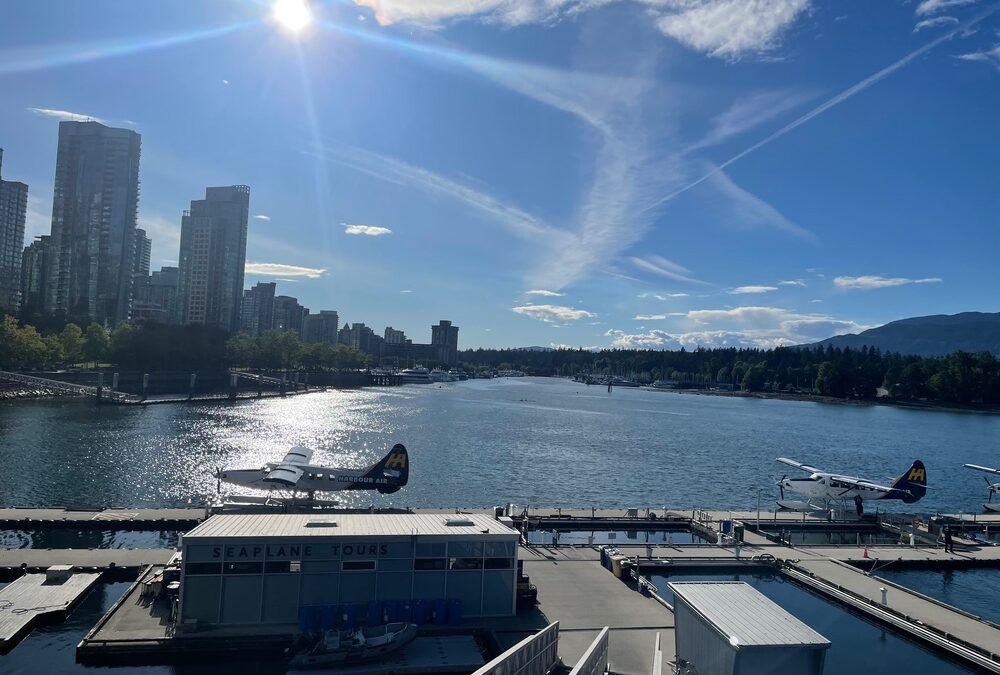“Suicide. Oh. That sounds hard.”
While wandering the hotel halls at my first National Suicide Prevention Conference, I overheard comments from people attending other conferences.
Suicide. Oh. That sounds hard.
Their facial expressions implied:
Glad it’s not me, or
How can anyone do that kind of work, day after day?
Are you thinking the same thing?
To be fair, I wasn’t sure what to expect myself when I flew to Vancouver so their comments struck a chord with me.
I was apprehensive and worried it would be too difficult. I hoped for connection and healing. I wanted to learn and understand more but the last thing I expected was dancing.
I had only recently changed my work to focus on suicide prevention. For three decades, I’d tucked my brother’s suicide away in a little box and buried it deep inside. What if this conference was just too much for me to handle? What if I wasn’t ready?
If you’re thinking the same thing, here’s what it was really like at “Inspiring Hope Together,” the 34th national conference held by the Canadian Association for Suicide Prevention. (Yes there was dancing, in a swaying, bouncy kind of way.)
Here’s what it was really like
Professionals and people with lived experience came together from across Canada and parts of the U.S. First Nations, Inuit, Métis, immigrants and settlers bridged culture and geography to learn ways to reduce suicide and focus on the Indigenous concept of Life Promotion.
We were sharing and learning from each other, listening and encouraging and searching together.
“We are at a turning point,” one presenter said.
“It’s never happened before that people around the world are working together to change the narrative and prevent suicide. It’s happening now.”
I’ve been to lots of conferences. Financial conferences across Europe and the UK. Writing conferences in Australia, Canada and the U.S. Never before have I felt so validated, so supported and empowered to make change.
We talked and nodded and cried and hugged. And we had a dance party.
Cedar Wash and Healing Circle
During sessions, I listened as Indigenous presenters, social workers and artists talked about ways they worked in communities to build health and promote life-sustaining practices like Wise Practices.
In the quiet before and after sessions, I learned how to use the healing Cedar Wash, an Indigenous custom that purifys, grounds and connects us in the present. And in the evenings, I had the honour of learning more about Two-Eyed Seeing from Elder Albert E Marshall and participating in my first Healing Circle.
For the first time, I shared my story of suicide loss openly in a group and I listened to other people talk about their experiences. A young woman sitting next to me said something I’d been thinking for years: that I didn’t want to let go of the pain because I was afraid I’d be letting go of my brother.
As I listened to others, I nodded in agreement: Yes, I felt stuck. Yes, I felt like a fraud. Yes I hurt.
I learned that I was not the only one. By talking about my brother and my uncle I felt more connected and less alone.
We also had a dance party
Mike Shoreman, author and mental health advocate, was one of the keynote speakers. He’s also the first person with disabilities to cross all five Great Lakes. And he did it on paddleboard!
So you can see why he’s one of my new heros.
Mike shared his story of acute physical and mental crisis which led to his suicide attempt and his journey to healing. He talked about removing the stigma around mental health, building better supports and resilience.
And Mike ended his talk with a dance party.
Imagine a ballroom full of researchers, social workers, counsellors, directors and many bereaved by suicide. Someone dimmed the lights. Coldplay’s A Sky Full of Stars started on the overhead speakers. We held up our mobile phones, activated their lights. Mike turned up the volume. We started swaying and then bounced to the music. Arms in the air. Smiling at strangers. Laughing with people we’d never met before. Some of us smiling through tears.
A short dance party but inspiring and uplifting. And hopeful.
Now that has never happened at any financial conference I’ve been to.
We choose to build hope, to dance, to prevent suicide
So yes, the conference was difficult. And uplifting. Working to end suicide is hard. And rewarding. And writing about my experience, being really honest, is daunting for me. But I hope it helps.
I didn’t choose to have suicide in my life.
I choose to make a difference because I know no one is immune. I also know suicide is preventable. If I help one person, if I make you feel less alone, it’s worth it.
So let’s look after ourselves and make time to dance. Or rest. Or read a book. Or go paddle boarding. Or hug a friend.
Because this is hard work and it’s worth it.
A huge thank you to the Canadian Association for Suicide Prevention and especially to Sean Krausert and Pat Doyle, who made it possible for me to attend the conference.
NEED TO TALK WITH SOMEONE?
* CANADA. Suicide Prevention Lifeline: Call or text 988 (or 1-800-273-TALK (8255) for 24/7 bilingual, trauma-informed, and culturally appropriate suicide prevention support. For more information: The Canadian Association for Suicide Prevention.
*AUSTRALIA: Lifeline Australia: Call 13 11 14 or Text 0477 13 11 14 (6 pm-midnight). For more information: Suicide Prevention Australia.
* UK: Samaritans: Call 116 123 for 24/7 support; Childline: Call 0800 1111.
*USA: Call or Text 988. Suicide & Crisis Line.

